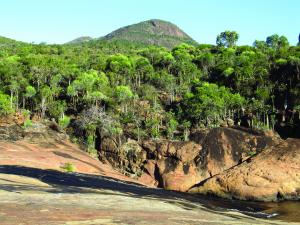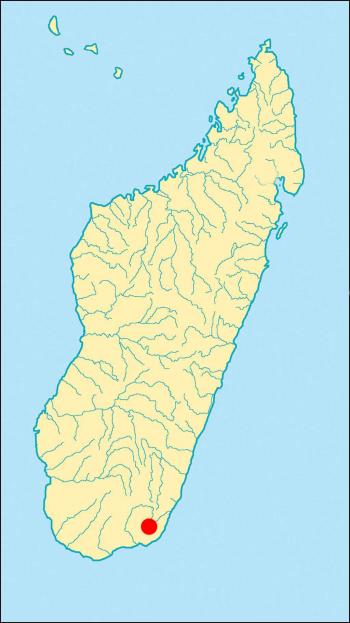You are here
Andohahela National Park ***

Andohahela National Park is in extreme southeastern Madagsacar, and is composed of three non-contiguous parcels situated along the flanks of the Anosyennes Mountains. The park has excellent trails and camping facilities. Malio, the rain forest portion (Parcel 1), is a good place to see the red-collared brown lemur (Eulemur collaris) and the southern bamboo lemur (Hapalemur meridionalis) during daytime hours, especially along the road to Col de Manangotry. It is also the only place to see the Andohahela sportive lemur (Lepilemur fleuretae), and a number of other species have been reported as well, including an unknown mouse lemur (Microcebus), Milne-Edwards’ sifaka (Propithecus edwardsi), aye-aye (Daubentonia madagascariensis), and possible even some form of fork-marked lemur (Phaner), but these need to be confirmed. This area is a few hours drive by car from Tolagnaro (= Fort-Dauphin) and arrangements can be made through all local tour operators. Ring-tailed lemurs (Lemur catta) and Verreaux’s sifaka (Propithecus verreauxi) can also be seen in the day in Ihazofotsy, the spiny forest portion of Andohahela (Parcel 2). Night hikes in this part of the park offer visitors the opportunity to view gray mouse lemur (Microcebus murinus), gray-brown mouse lemur (Microcebus griseorufus), fat-tailed dwarf lemur (Cheirogaleus medius), and white-footed sportive lemur (Lepilemur leucopus). Ihazofotsy can be reached by four-wheel drive vehicle either from Berenty or Tolagnaro (= Fort-Dauphin) in about three or four hours. The trip is a rewarding experience that takes the visitor through an attractive piece of southern spiny forest, lightly inhabited by scattered villages of the Antandroy (the traditional people of this region), but the road is very rough. There is also an excellent trail through the transitional forest of Parcel 3 at Tsimelahy, located 8 km to the north of the main road to Amboasary (the route taken to go to Berenty). Although there are surprisingly few lemurs along this trail, it is a superb piece of transitional forest that includes baobabs (Adansonia spp.), Pachypodium spp., Alluaudia spp., and the triangle palm (Dypsis decaryi), a very distinctive species that is grown horticulturally in many parts of the world but is actually endemic to this very small transition zone. Botanically, this is one of the most interesting walks in the entire southern region of Madagascar, and it can be visited in two or three hours. The road is rough, but always passable with a four-wheel drive vehicle.
